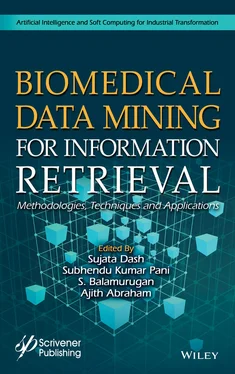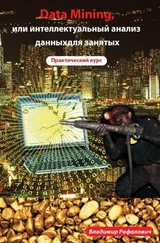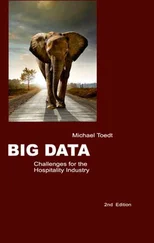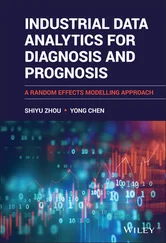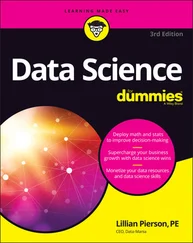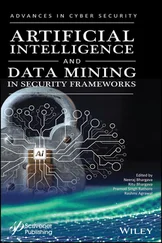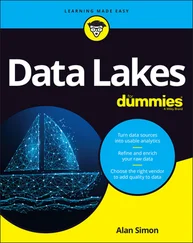61. Andreeva, A., Howorth, D., Chothia, C., Kulesha, E., Murzin, A.G., SCOP2 prototype: A new approach to protein structure mining. Nucleic Acids Res. , 42, 310–314, 2014. [CrossRef] [PubMed].
62. Sillitoe, I., Lewis, T.E., Cuff, A., Das, S., Ashford, P., Dawson, N.L., Furnham, N., Laskowski, R.A., Lee, D., Lees, J.G., Cath: Comprehensive structural and functional annotations for genome sequences. Nucleic Acids Res. , 43, 376– 381, 2015.
63. Karplus, K., Barrett, C., Hughey, R., Hidden Markov models for detecting remote protein homologies. Bioinfo. , 14, 10, 846–856, 1998.
64. Eddy, S.R., Profile hidden Markov models. Bioinfo. , 14, 755–763, 1998.
65. Soeding, J., Protein homology detection by HMM–HMM comparison. Bioinfo. , 21, 951–960, 2005.
66. Rost, B. and Sander, C., Prediction of protein secondary structure at better than 70% accuracy. J. Mol. Biol. , 232, 2, 584–599, 1993, https://doi.org/10.1006/jmbi.1993.1413.
67. Rost, B., PHD: Predicting one-dimensional protein structure by profile based neural networks. Methods Enzymol. , 266, 525–539, 1996, https://doi.org/10.1016/s0076-6879(96)66033-9.
68. Jones, D.T., Protein secondary structure prediction based on positionspecific scoring matrices. J. Mol. Biol. , 292, 2, 195–202, 1999.
69. Cuff, J.A., Clamp, M.E., Siddiqui, A.S., Finlaym, M., Barton, G.J., JPred: A consensus secondary structure prediction server. Bioinformatics , 14, 10, 892– 893, 1998.
70. LeCun, Y., Bengio, Y., Hinton, G., Deep learning. Nature , 521, 7553, 436–444, 2015.
71. Zhu, J., Wang, S., Bu, D., Xu, J., Protein threading using residue covariation and deep learning. Bioinformatics , 34, 13, i263–i273, 2018.
72. Xu, J. and Wang, S., Analysis of distance-based protein structure prediction by deep learning in CASP13. Proteins , 87, 12, 1069–1081, 2019, https://doi.org/10.1002/prot.25810.
73. Xu, J., Distance-based protein folding powered by deep learning. Proc. Natl. Acad. Sci. U.S.A. , 116, 34, 16856–16865, 2019.
74. Greener, J.G., Kandathil, S.M., Jones, D.T., Deep learning extends de novo protein modelling coverage of genomes using iteratively predicted structural constraints. Nat. Commun. , 10, 3977, 2019.
75. Senior, A.W., Evans, R., Jumper, J. et al. , Protein structure prediction using multiple deep neural networks in CASP13. Proteins , 87, 12, 1041–1048, 2019, https://doi.org/10.1002/prot.25834. [2] Cao, R., Freitas, C., Chan, L., Sun, M., Jiang, H., Chen, Z., ProLanGO: Protein Function Prediction Using Neural Machine Translation Based on a Recurrent Neural Network. Molecules , 22, 10, 1732, 2017.
76. Qiu, J., Sheffler, W., Baker, D., Noble, W.S., Ranking predicted protein structures with support vector regression. Proteins , 71, 1175–1182, 2007.
77. Joo, H. and Tsai, J., An amino acid code for β -sheet packing structure. Proteins: Structure, Function, and Bioinformatics , Volume 82 (9) – Sep. 1, 2014.
78. Crick, F.H., The packing of α -helices: simple coiled-coils. Acta Crystallogr. , 6, 689–697, 1953.
79. von Mering, C., Krause, R., Sne, B. et al. , Comparative assessment of large scale data sets of protein–protein interactions. Nature , 417, 6887, 399–403, 2002.
80. Hakes, L., Lovell, S.C., Oliver, S.G. et al. , Specificity in protein interactions and its relationship with sequence diversity and coevolution. PNAS , 104, 19, 7999–8004, 2007.
81. Harwell, L.H., Hopfield, J.J., Leibler, S., Murray, A.W., From molecular to modular cell biology. Nature , 402, c47–c52, 999.
82. Jeong, H., Mason, S., Barabási, A.L. et al. , Lethality and centrality in protein networks. Nature , 411, 6833, 41–42, 2001.
83. Giot, L. et al. , A protein interaction map of Drosophila melanogaster . Science , 302, 1727–1736, 2003.
84. Li, S., Armstrong, C., Bertin, N., A map of the interactome network of the metazoan. Science , 303, 5657, 540–543, 2004.
85. Wuchty, S., Scale-free behavior in protein domain networks. Mol. Biol. Evol. , 18, 9, 1694–1702, 2001.
86. del Sol, A. and O’Meara, P., Small-world network approach to identify key residues in protein–protein interaction. Proteins , 58, 3, 672–682, 2004.
87. del Sol, A., Fujihashi, H., O’Meara, P., Topology of small-world networks of protein–protein complex structures. Bioinformatics , 21, 8, 1311–131, 2005.
88. Brohée, S. and van Helden, J., Evaluation of clustering algorithms for protein–protein interaction networks. BMC Bioinf. , 7, 48, 2006.
89. Spirin, V. and Mirny, L.A., Protein complexes and functional modules in molecular networks. PNAS , 100, 12123–12128, 2003.
90. Bu, D., Zhao, Y., Cai, L. et al. , Topological structure analysis of the protein– protein interaction network in budding yeast. Nucleic Acids Res. , 31, 9, 2443– 2450, 2003.
91. Nicolas, J., Artificial intelligence and bioinformatics. 2018, https://doi.org/10.1007/978-3-030-06170-8_7.
92. Dimova, D. and Bajorath, J., Advances in activity cliff research. Mol. Inf. , 35, 5, 181–191, 2016.
93. Stumpfe, D., Hu, H., Bajorath, J., Evolving Concept of Activity Cliffs. ACS Omega , 4, 11, 14360–14368, 2019, Published 2019 Aug 26.
94. Kitchen, D.B., Decornez, H., Furr, J.R., Bajorath, J., Docking and scoring in virtual screening for drug discovery: Methods and applications. Nat. Rev. Drug Discovery , 3, 11, 935, 2004.
95. Ferreira, L.G., dos Santos, R.N., Oliva, G., Andricopulo, A.D., Molecular docking and structure-based drug design strategies. Molecules , 20, 7, 13384– 13421, 2015.
96. Dos Santos, R.N., Ferreira, L.G., Andricopulo, A.D., Practices in Molecular Docking and Structure-Based Virtual Screening. Methods Mol. Biol. (Clifton, N.J.) , 1762 , 31–50, 2018, https://doi.org/10.1007/978-1-4939-7756-7_3.
97. Brown, J.B., Niijima, S., Okuno, Y., Compound–Protein Interaction Prediction Within Chemogenomics: Theoretical Concepts, Practical Usage, and Future Directions. Mol. Inf. , 32, 906–921, 2013.
98. Qiu, T., Qiu, J., Feng, J., Wu, D., Yang, Y., Tang, K., Cao, Z., Zhu, R., The recent progress in proteochemometric modelling: Focusing on target descriptors, cross-term descriptors and application scope. Brief Bioinform. , 18, 1, 125– 136, 2017.
99. Jackson, M.J., Esnouf, M.P., Winzor, D., Duewer, D., Defining and measuring biological activity: Applying the principles of metrology. Accredit. Qual. Assur. , 12, 6, 283–29, 2007, https://doi.org/10.1007/s00769-006-0254-1.
100. Vamathevan, J., Clark, D., Czodrowski, P., Dunham, I., Ferran, E., Lee, G., Li, B., Madabhushi, A., Shah, P., Spitzer, M., Zhao, S., Applications of machine learning in drug discovery and development. Nat. Rev. Drug Discovery , 18 , 6, 463–477, 2019, https://doi.org/10.1038/s41573-019-0024-5.
101. Sidey-Gibbons, J. and Sidey-Gibbons, C.J., Machine learning in medicine: A practical introduction. BMC Med. Res. Method. , 19 , 1, 64, 2019, https://doi.org/10.1186/s12874-019-0681-4.
102. Greene, N., Judson, P.N., Langowski, J.J., Marchantm, C.A., Knowledge-based expert systems for toxicity and metabolism prediction: DEREK, StAR and METEOR. SAR QSAR Environ. Res. , 10, 2–3, 299–314, 1999.
103. Raies, A.B. and Bajic, V.B., In silico toxicology: computational methods for the prediction of chemical toxicity. Wiley Interdiscip. Rev. Comput. Mol. Sci. , 6 , 2, 147–172, 2016, https://doi.org/10.1002/wcms.1240.
Читать дальше
